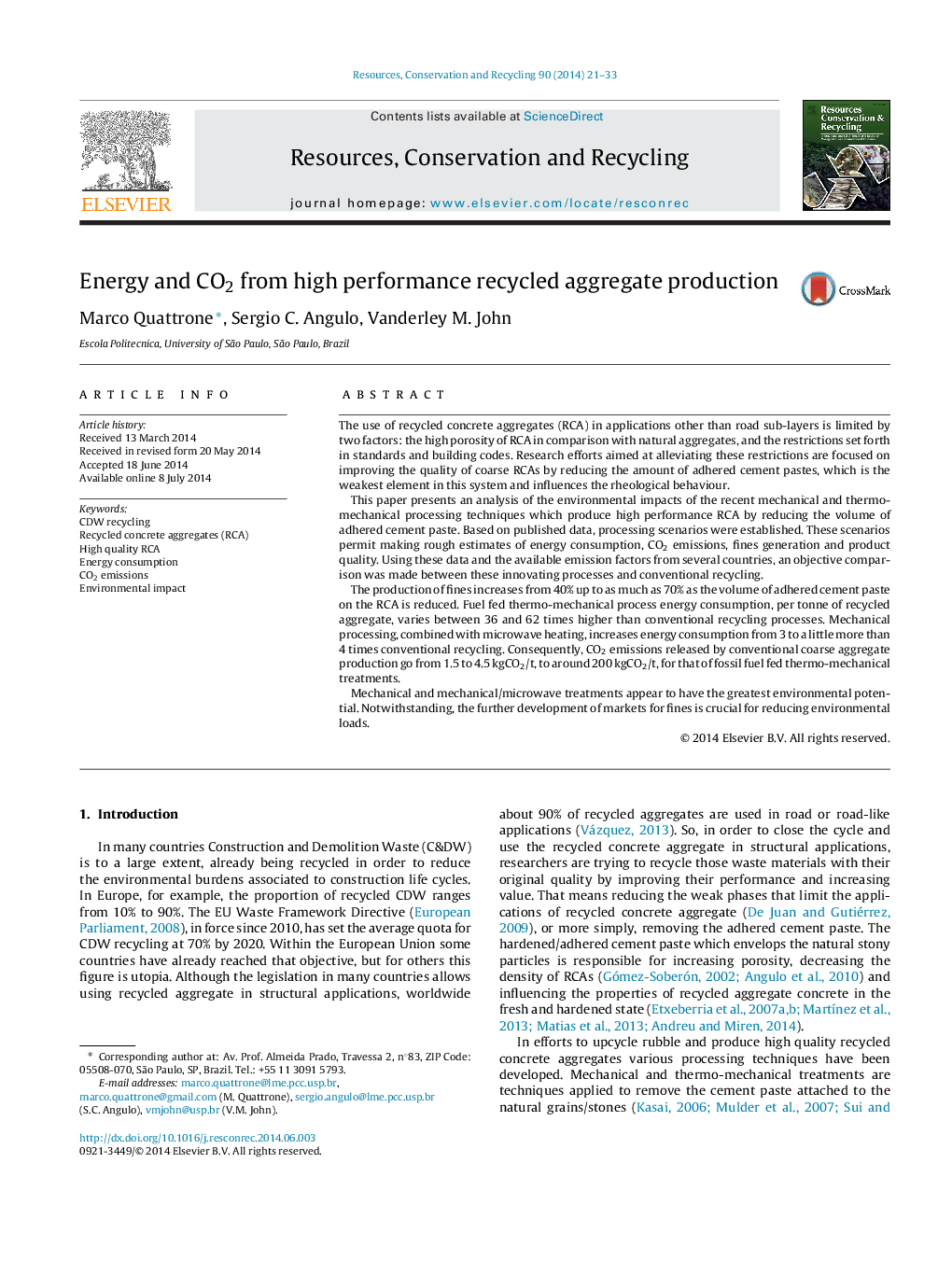| کد مقاله | کد نشریه | سال انتشار | مقاله انگلیسی | نسخه تمام متن |
|---|---|---|---|---|
| 1062850 | 1485699 | 2014 | 13 صفحه PDF | دانلود رایگان |

• Mechanical and thermal processes to produce high performance RCA have been analyzed.
• We calculated, for different scenarios, fines generation, energy, and CO2 emissions.
• The production of fines increases from 40% up to as much as 70%.
• Energy consumption has resulted up to 62 times higher than conventional recycling.
• CO2 emissions range from 1.5 to 4.5 kgCO2/t, to around 200 kgCO2/t.
The use of recycled concrete aggregates (RCA) in applications other than road sub-layers is limited by two factors: the high porosity of RCA in comparison with natural aggregates, and the restrictions set forth in standards and building codes. Research efforts aimed at alleviating these restrictions are focused on improving the quality of coarse RCAs by reducing the amount of adhered cement pastes, which is the weakest element in this system and influences the rheological behaviour.This paper presents an analysis of the environmental impacts of the recent mechanical and thermo-mechanical processing techniques which produce high performance RCA by reducing the volume of adhered cement paste. Based on published data, processing scenarios were established. These scenarios permit making rough estimates of energy consumption, CO2 emissions, fines generation and product quality. Using these data and the available emission factors from several countries, an objective comparison was made between these innovating processes and conventional recycling.The production of fines increases from 40% up to as much as 70% as the volume of adhered cement paste on the RCA is reduced. Fuel fed thermo-mechanical process energy consumption, per tonne of recycled aggregate, varies between 36 and 62 times higher than conventional recycling processes. Mechanical processing, combined with microwave heating, increases energy consumption from 3 to a little more than 4 times conventional recycling. Consequently, CO2 emissions released by conventional coarse aggregate production go from 1.5 to 4.5 kgCO2/t, to around 200 kgCO2/t, for that of fossil fuel fed thermo-mechanical treatments.Mechanical and mechanical/microwave treatments appear to have the greatest environmental potential. Notwithstanding, the further development of markets for fines is crucial for reducing environmental loads.
Journal: Resources, Conservation and Recycling - Volume 90, September 2014, Pages 21–33